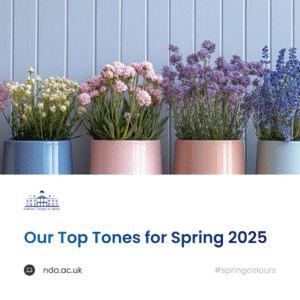With a new year many of us try to come up with some new year resolutions which will make us healthier either mentally or physically. Having a good clear out and declutter can give you a more tranquil living space as well as helping your mental tranquillity.
This week, we’re discussing the controversial KonMari method. Whether you embrace the entire philosophy or not, the aim is to give you the strength to be brutal when it comes to de-cluttering your home.
How to De-clutter Your Interior:
We often feel the need to surround ourselves will all our personal possessions we hold dear, but this can end up looking cluttered and disorganised within an interior space. Too many different clothes, objects, styles and mismatched colours competing for attention will detract away from any interior scheme. So how do we balance ones personal possessions with a stylish, minimalistic interior – by de-cluttering our interiors.
Written by Japanese professional organizer Marie Kondo, The Life Changing Method of Tidying Up describes a simple method to de-clutter your life, from clothes to personal knick-knacks her methods will revolutionize the way you organise your belongings.
The method is based on the simple idea of joy that will not only transform your interior, but once you have de-cluttered your home her philosophy can also be applied to your whole life too “giving you more confidence, helping you to become more successful, and giving you the energy and motivation to create the life you want.”
The Idea of Joy
Compared to other organizing methods that make you consider an items purpose or question when you last used it, Marie Kondo’s method is even simpler. When it comes to any of the items in your house, answer this one simple question – Does it bring you joy? Marie recognises that a tidy home means you are less likely to feel stressed and overwhelmed by the negative impact of objects in your home that no longer bring you joy.
If you answer yes, you keep the item. If you hesitate or say no, you donate it or throw it away. The KonMari method is simple yet effective, and stops you spending a lot of time justifying how an object may be useful to you at some point and therefore decide to keep it. Marie’s direct yes/no question of whether something brings you joy is a simple, emotion-based question that can be answered almost instantly – That item either makes you feel joy or it doesn’t.
The Method
1) Instead of tackling a room at a time, you are instructed to gather up your possessions from around the house and divide your belongings into separate piles. Her idea is to de-clutter by item type instead of by room, so whilst your instinct might be to move from sorting your bedroom then your kitchen, instead separate into product categories, i.e books, ornaments, knick-knacks.
Tidying in the right order is also key, start with clothes, then books, papers and then komono (miscellaneous, random bits.)
2) Item by item, pick each one up and hold it out in front of you before asking yourself one simple question – Does this bring me joy?
This decision making stage is designed to be fairly straightforward as you either feel joy or you don’t. Before long you should have separated your belongings into ‘yes’ ‘donate’ and ‘throw-away’ piles,’ and will soon start to see the real reasons why you hold onto things. With this method you are encourage to throw-away things that no longer bring you joy, meaning organising what’s left should be a lot simpler process.
3) Discard the things you are getting rid of before you begin organising objects you are keeping, bag up and throw away papers, clothes and knick-knacks. You must discard these first. Don’t put anything away until everything you are going to discard has been removed, then you can move on to organising.
How To Organize Your Home
Once you have discarded of objects that no longer ring you joy, you can begin organising those items you’d like to keep. The KonMari method teaches you how to store all items by type in the same place so that things don’t become scattered and lead to more accumulation of clutter.
Once you learn the proper methods of how to store your possessions, you’ll be able to stay clutter free as everything will now have a specific place in your home. These methods can be applied to all aspects of your home, like kitchen cabinets, display shelving units and bathroom products that can be sorted and stored more efficiently.
Marie believes in organising objects by colour or type and only keeping items that truly ‘spark joy.’ If de-cluttering your wardrobe is your main goal – her illustrated folding technique has revolutionised how to fold clothes and save space. Her drawings are quite hard to decipher, but if you fancy giving it a go Goop have some great how-to videos here.
Emotional Baggage
Guilt
The method isn’t based on throwing out or donate as much as possible, but to make sure that the things you keep make you truly happy. And sometimes we hold onto things for the wrong reasons. Like an item of clothing you’ve never worn or an interior item with the tag still on, or one you no longer like but perhaps you felt joy when you bought it or feel guilty about getting rid if you spent a lot of money on it, so keep it just in case.
When it comes to the KonMari method, Marie is keen to address the feeling of guilt that often arises when it is time to donate or throw-away these items that no longer bring you joy. Think about when you bought the item, did it bring you joy to buy it.
Even if it was the thrill of shopping, the hunt or just thinking about what you intended to do with it that bought you joy, then Kondo says that the item has served its purpose – it brought you joy at some point. Now you can remember that and put it into the donation/ throw-away pile without feeling guilty.
Nostalgia
Some items that don’t bring you joy any more are easy to part with, whilst others create an internal struggle. We often hold on to items as they trigger memories and remind us of a certain time or place. Whilst we often accept we might never wear/ use these items again, we still keep them in an attempt to hang on to those emotional connections they elicit. The item is just an item, and we still have those memories with or without it.
Quality not quantity
It is better to have fewer things you like, than a lot of things you don’t – a saying that on paper is obvious, but is a life lesson we often forget. From our wardrobes to our cluttered interiors, we often buy items on a whim. Sometimes they are familiar (usually because we have several very similar ones already), whilst others we convince ourselves we need.
But sometimes it is about stepping back and accessing what we have and what brings us joy, and which items are just taking up space. By asking yourself if it brings you any joy, you will soon realise all the things you keep hold of out of habit rather than because it brings you joy.
Often we think if we got rid of these items we would feel the need to replace them. But more often than not, once you realise the items that are important and mean something to you, you will start to feel content with what you have instead of chasing the feeling of needing something new. Once you de-clutter you’ll understand that key interior pieces will make more of a statement that all your unorganised clutter on display.
It’s not about what others think.
It is human nature to seek approval from others, and this is something we need to ensure doesn’t interfere with the de-cluttering process. Just because someone else thinks an item of clothing or an interior item is okay doesn’t mean you should keep it. They may just be indifferent to it and this boils down to if it brings you joy, you have to feel it yourself as another person’s joy is no substitute for your own.
Now if you live with someone else, this doesn’t mean throw-away their stuff as it doesn’t bring you joy. It is about assessing what brings you job as a couple or as a family. If you, and others are indifferent to an item and it doesn’t bring anyone joy then bin it.
Whilst other items, such as your boyfriend/ husband’s star wars collection may not bring you joy but to them is a treasured item, should be kept and incorporated into your clutter-free scheme. There is some compromise in this method, and it is about assessing what joy an item brings to your lives. Such a simple and incredibly powerful question can be applied to all aspects of our lives, not just our home or clothes.
I hope this has inspired you all to start the new year by de-cluttering, whether it be your wardrobe, interior or other aspects of your lives. You can buy Marie’s book here.
Sign Up to Our Newsletter
References:
Websites:
Candlelight within an interior. (2015) [online] Available from: www.huldals.blogspot.com [Accessed 24.11.2015]
Decorating with Candles (2015) [online] Available from: www. indulgy.com [Accessed 25.11.2015]
Candle display for Christmas (2015) [online] Available from:www.tidbitsandtwine.com [Accessed 27.11.2015]
The Life Changing Magic of Tidying Up (2015) [online] Available from: http://www.popsugar.com/latest/the-life-changing-magic-of-tidying-up [Accessed 02.12.2015]
The Illustrated Guide to the KondoMari Method (2015) [online] Available from: http://goop.com/the-illustrated-guide-to-the-kondo-mari-method/[Accessed 03.12.2015]
7 tips to organising your home (2015) [online] Available from:http://www.drnorthrup.com/7-tips-to-organize-your-home-using-the-konmari-method/[Accessed 03.12.2015]
5 Life changing lessons the Konmari Method taught me (2015) [online] Available from: https://www.happier.com/blog/5-life-changing-lessons-the-konmari-decluttering-method-taught-me [Accessed 03.12.2015]
The Konmari Method by Marie Kondo (2015) [online] Available from: http://www.tidyingup.com/[Accessed 03.12.2015]
How to declutter with the Konmari Method (2015) [online] Available from: http:www.apartmentapothecary.com/[Accessed 01.12.2015]

















2 responses
Thank you. This blog really helped me.I love this type of blog,waiting for your next blog.
Thank you so much for doing such a responsive job. I must say it will be very helpful for everyone. thanks again and keep doing with best wishes.